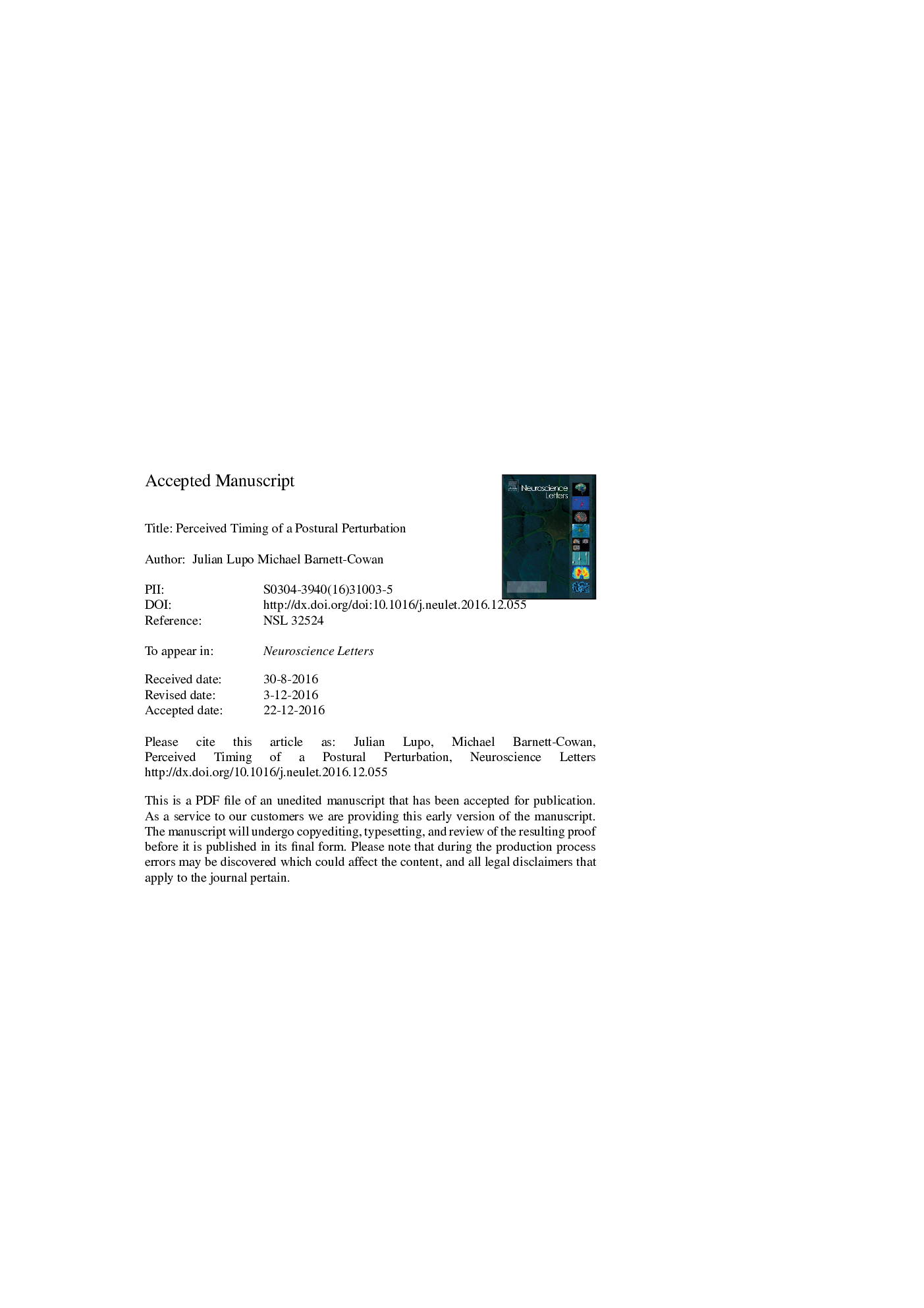| کد مقاله | کد نشریه | سال انتشار | مقاله انگلیسی | نسخه تمام متن |
|---|---|---|---|---|
| 5738578 | 1615060 | 2017 | 22 صفحه PDF | دانلود رایگان |
عنوان انگلیسی مقاله ISI
Perceived timing of a postural perturbation
ترجمه فارسی عنوان
زمان درک یک اختلال موضعی
دانلود مقاله + سفارش ترجمه
دانلود مقاله ISI انگلیسی
رایگان برای ایرانیان
کلمات کلیدی
موضوعات مرتبط
علوم زیستی و بیوفناوری
علم عصب شناسی
علوم اعصاب (عمومی)
چکیده انگلیسی
Falling down is a common event that threatens the survival of an organism. Simple, yet sophisticated neural mechanisms allow for rapid detection of a fall as well as the generation of compensatory reflexes designed to prevent a fall. Fall awareness and preventative alerting devices could potentially mitigate the likelihood of a fall, however, relatively little is known about the perceived timing of a fall. Common anecdotal reports suggest that humans often describe distortions in their perception of time with very little recollection of what occurred during the fall. Previous research has also found that the vestibular system is perceptually slow compared to the other senses (45-160Â ms delay), indicating that vestibular stimuli must occur prior to other sensory stimuli in order for it to be perceived as synchronous. Here we examine whether fall perception is similarly slow. Participants made temporal order judgments identifying whether fall or sound onset came first to measure the point of subjective simultaneity. Results show that fall perception is slow, where the onset of a perturbation has to precede an auditory stimulus by â¼44 ms to appear coincident with the fall. We suggest that the central nervous system's rapid detection and response capabilities are restricted to reflexive behaviour, with conscious awareness of a fall being prioritized less. The additional lead times for detecting perturbation onset constrain possible fall detection and alert systems that have been proposed to inform a user to prevent falls and may also help explain the increased likelihood for fall incidence in the elderly.
ناشر
Database: Elsevier - ScienceDirect (ساینس دایرکت)
Journal: Neuroscience Letters - Volume 639, 3 February 2017, Pages 167-172
Journal: Neuroscience Letters - Volume 639, 3 February 2017, Pages 167-172
نویسندگان
Julian Lupo, Michael Barnett-Cowan,
